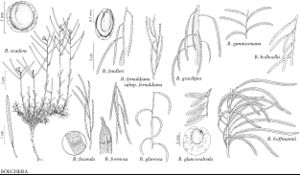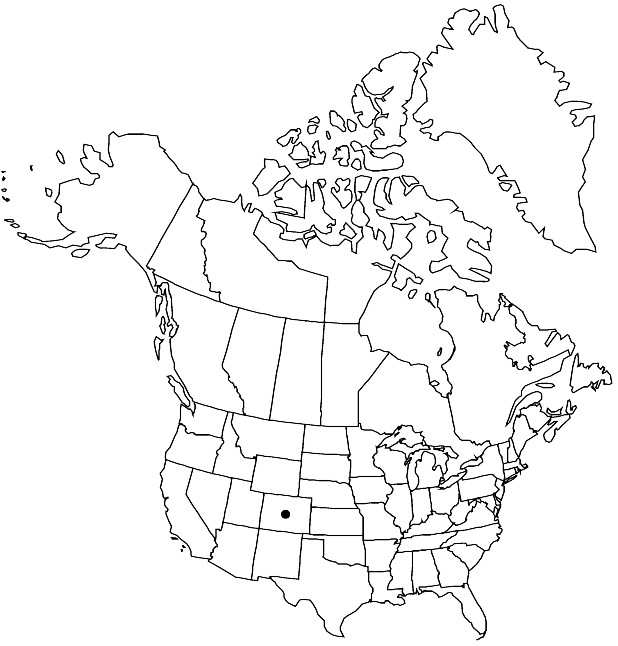Difference between revisions of "Boechera gunnisoniana"
Phytologia 51: 370. 1982.
FNA>Volume Importer |
imported>Volume Importer |
||
| Line 52: | Line 52: | ||
|publication year=1982 | |publication year=1982 | ||
|special status= | |special status= | ||
| − | |source xml=https:// | + | |source xml=https://bibilujan@bitbucket.org/aafc-mbb/fna-data-curation.git/src/bb6b7e3a7de7d3b7888a1ad48c7fd8f5c722d8d6/coarse_grained_fna_xml/V7/V7_535.xml |
|tribe=Brassicaceae tribe Boechereae | |tribe=Brassicaceae tribe Boechereae | ||
|genus=Boechera | |genus=Boechera | ||
Revision as of 23:58, 27 May 2020
Perennials; usually long-lived; (cespitose); sexual; caudex often woody. Stems usually 2–6 per caudex branch, arising from margin of rosette near ground surface, 0.8–2(–2.5) dm, densely pubescent proximally, trichomes short-stalked, 2–4-rayed, 0.08–0.3 mm, mixed with fewer simple ones, usually sparsely pubescent distally, rarely glabrous. Basal leaves: blade linear-oblanceolate, 1–3(–4) mm wide, margins entire, ciliate proximally, trichomes to 0.8 mm, surfaces densely pubescent, trichomes short-stalked, 3–6-rayed, 0.08–0.3 mm. Cauline leaves: 3–9, not concealing stem; blade auricles 0.2–1 mm, surfaces of distalmost leaves glabrous or sparsely pubescent. Racemes 7–15-flowered, usually unbranched. Fruiting pedicels divaricate, straight or slightly curved, 4–7 mm, glabrous or sparsely pubescent, trichomes appressed, branched. Flowers divaricate-ascending at anthesis; sepals pubescent; petals white or lavender, 4–6 × 1–2 mm, glabrous; pollen ellipsoid. Fruits horizontal to divaricate-descending, not appressed to rachis, not secund, straight to slightly curved, edges parallel, 2.5–4 cm × 1–1.5 mm; valves glabrous; ovules 36–54 per ovary; style 0.1–0.2 mm. Seeds uniseriate, 1–1.2 × 0.8–1 mm; wing continuous, 0.1–0.15 mm wide. 2n = 14.
Phenology: Flowering May–Jun.
Habitat: Rocky slopes and knolls with sagebrush
Elevation: 2100-2700 m
Discussion
Boechera gunnisoniana is most similar to B. glareosa; it is distinguished from that species by having trichomes smaller (0.08–0.3 versus 0.3–0.6 mm) and more highly divided (mostly 2–4-rayed versus simple and 2-rayed) proximally on stems, and fewer (36–54 versus 50–80) ovules per ovary. The two species are allopatric, with B. glareosa known only from eastern Utah and extreme northwestern Colorado and B. gunnisoniana apparently endemic to Gunnison County in west-central Colorado.
Selected References
None.

